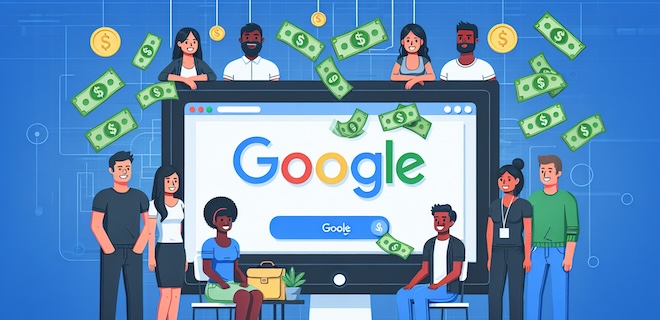 |
|||||||||||
|
|||||||||||
| Inside Google’s Controversial Agency Incentive Program |
 |
| Can a week really go by in ad tech without Google being under the microscope? Google's incentive programs for agencies are under intense scrutiny as new documents filed in the Department of Justice's antitrust trial against the tech giant reveal new details. According to these documents, Google planned to spend hundreds of millions of dollars to encourage agencies to purchase specific types of media. The incentives included discounts, special perks like third-party research, and cash-back offers for agencies that agreed to buy particular media from Google, such as Waze or programmatic deals on AdX. *grabs my popcorn* While Google publicly acknowledged the existence of such programs in a blog post, newly released documents revealed new details about the initiative. They outline financial commitments Google made to these agencies and how the company internally viewed and strategized these incentive programs. It raised questions about the transparency and fairness of these deals, considering that these practices could potentially impact competition in the ad tech industry. If you ask Arielle Garcia, Director of Intelligence at Check My Ads, the program primarily benefited Google. Incentive programs are not illegal, but their ethical implications are sticky, particularly if they do not serve the client's best interests. – AB |
 |
| Brand Safety is Killing Publisher Revenue |
| Brand safety may be one of the biggest oxymorons in ad tech because it is killing publisher revenue left and right. Of course, brand safety is not supposed to be a revenue assassin. The concept is supposed to help advertisers market ads against content that does not negatively impact their brands. Still, there are challenges. For instance, at Pubforum Boston, Jana Meron, Vice President of Revenue Operations & Data at the Washington Post, discussed how the emphasis on brand safety is helping the demonization of quality news, specifically during election season. “Brand safety and news should not be mutually exclusive, and advertisers should feel confident placing ads next to election content,” said Meron. But more recently, the conservative right took brand safety to court, which ultimately led to the shutdown of The Global Alliance of Responsible Media (GARM). For the far right, this was a victory against the left. They accused liberal-leaning activists of encouraging advertisers to boycott far-right sites. Whether the takedown of GARM and the “victory” against the left are a good thing may depend on your political leanings, but the conversation around brand safety is just as sticky. As Business Insider points out, brand safety has not only affected far-right media outlets. It affects publishers of all types. This stems from a fear of funding hate speech, misinformation, terrorism, and online piracy. If you ask Claire Atkin, Co-founder, and CEO of Check My Ads, the lack of transparency in the digital supply chain is the root of the problem that funds disinformation. This extends to brand safety as well, because as Meron pointed out, “publishers are often left out of the brand safety conversation.” – AB |
| Advertisers Jump Ship From X and Focus Ad Spend on Instagram |
| A recent Comcast Strata survey reveals that Instagram is the top choice for social media ad campaigns, surpassing X (formerly Twitter). But with Elon Musk at the helm, can you really blame them? This shift highlights X's ongoing struggles, including slow user growth, management instability, and a declining stock price. The survey revealed that 63% of advertisers prefer Instagram, compared to 56% who choose X, with Facebook still leading at 96%. Despite X's insistence on strong relationships with advertisers, the platform is losing ground to Instagram. Instagram's appeal lies in its extensive user base and Facebook-backed ad technology, allowing advertisers to target specific audiences more effectively. With over 400 million users on Instagram compared to X's 310 million, advertisers are increasingly directing their budgets toward Instagram. As one ad agency noted, most clients are shifting their focus and budgets from X to Instagram to reach a broader and more engaged audience. "We're seeing almost all of our clients shifting, if not all of their budgets, then most of their budgets from X to Instagram," said Chris Gilbert, senior social strategist at digital agency Kettle, which works primarily with fashion brands. "Marketers typically want to be where the audience is." – AB |
| @{optoutfooterhtml}@ |








